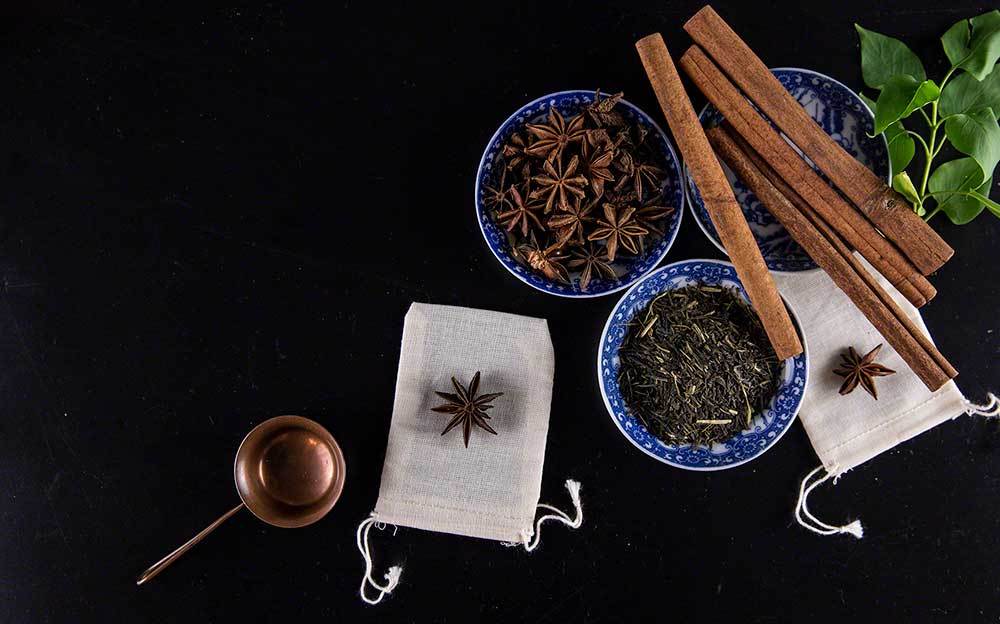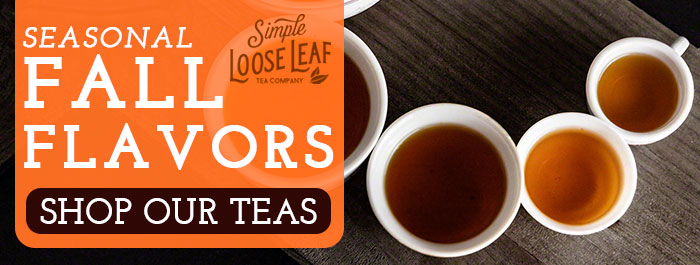Top 12 Naturally Sweet Teas and Tisanes
Some teas are sweeter than the others. There are many herbs and flowers that can make for a really sweet cup. Sweet teas don’t need to have sugar to be sweet. In fact, some real teas can have a very sweet flavor too. Sweetness occurs for many reasons. It can come from a natural sugar in the leaves, from different compounds such as glycyrrhizin in licorice root or steviol glycosides in stevia, or even as a contrast aftertaste to strong bitterness.Here are the top 12 naturally sweet teas, perfect for a guilt-free enjoyment.
1. Rooibos
African red bush or Rooibos is one of the most versatile herbal teas in the world. It can be drunk hot or cold, used for making lattes and even powdered as an ingredient in many recipes. Rooibos has a naturally sweet flavor, no bitterness and zero caffeine. Sweet flavor blends well with spices and honey, so rooibos is a base ingredient of many fun and aromatic blends. There is a scientific evidence that Rooibos might help with slowing down aging. It has antimutagenic and antioxidant properties and it’s good as a digestive aid.[1]Sweet taste and zero caffeine make rooibos a good choice for children as well.
Best for: Anyone looking for a mild sweetness and herbal flavor
2. Licorice root
Can you imagine infusing the sweetest delicious candy in a cup of hot water and drinking the brew completely guilt-free? This is how drinking licorice root tea feels like. The sweetest herb on the planet can be enjoyed on its own or blended with other herbs. Licorice is used to make a popular licorice candy. Licorice has antiviral and antimicrobial properties, and can be used for treating inflammation, stomach discomfort, sore throat and Hepatitis C[2]. In very high doses it can cause high blood pressure. Be warned though, licorice root tea is really very sweet.
Best for: A real sweet tooth that need extra sweetness
3. Chamomile
Not all chamomile teas are the same. Chamomile is grown in many countries, from Egypt and India, to Germany and Croatia. The best chamomile tea will have an intense yellow color and naturally sweet subtle flavor. It has been used as a natural remedy for treating insomnia and reducing inflammations for hundreds of years.
Best for: Almost anyone
4. Bee Pollen
Another great ingredient for making naturally sweet teas is bee pollen. It’s often used as a natural way of dealing with seasonal allergies. In a combination with other ingredients bee pollen may be a good way of easing hay fever symptoms. Bee pollen can be used for making a tea on its own, or to add benefits and flavor to different blends. It should be avoided by people allergic to bee pollen.
Best for: Those wanting to add a bit natural sweetness
5. Star Anise
Star Anise is a beautifully shaped spice mostly used in Indian chai teas. It has antimicrobial, anti insecticidal, antifungal and antioxidant properties[3]. Star Anise has a naturally sweet and herbal flavor. It can be used on its own to make a cup of delicious aromatic tea.
Best for: Tea drinkers that like chai and other spiced teas and oriental sweetness
6. Candyleaf
Under a tempting name hides a plant health-conscious people already know very well—Stevia. With zero calories and naturally intensely sweet flavor, this herb is often used as a replacement for sugar. Dried stevia leaves can be used for making a pure stevia tea, which is believed to have benefits on blood pressure, weight and even allergies. Today, the main importance of stevia lies in the ability to act as a safe natural sweetener with zero calories, thus fighting obesity[4]. We have chosen candy-leaf as a perfect addition to Garden of Mariposa, a herbal tea dedicated to butterflies—in fact, a whole garden of them.
Best for: Anyone that likes extra sweet teas
7. Osmanthus flower
Osmanthus flower is a beautiful tiny yellow flower from the osmanthus tree most commonly grown in Asian countries. It has a unique sweet peach flavor unlike any other flower or herb. Flowers can be used alone or for scenting green, oolong and black teas. We have used them to create Ebony Osmanthus, a subtle, sweet and clean black tea with notes of peaches.
Best for: Tea lovers that don’t mind unfamiliar
8. Pandan Leaf
Pandan leaves are mostly famous in Asian recipes to give flavor and color to many dishes. It’s often blended with green tea to add sweetness and color. Leaves can be used for making pure tea as well.
Best for: Anyone that likes their tea to have very a green color and sweet flavor
9. Cinnamon
Cinnamon is one of the most beloved delicious spices in the world. Although less intense in powder, bark has a strong sweetness and a spicy note. Traditionally, it has been used for its antioxidant, antimicrobial, anti-inflammatory, anticancer, and antidiabetic properties[5]. Cinnamon can be used for making pure cinnamon tea or blended with many other ingredients or pure teas for an extra spicy spark.
Best for: Cinnamon lovers
10. Sencha Green Tea
Not many people link sweetness to real teas, but leaves do contain natural sugar and other compounds that contribute to sweetness. Very mild sweetness can be found in many green teas, but some teas will have it almost always. Japanese green teas like sencha from a first spring harvest are famous for a combination of astringent and sweet notes. Sometimes the sweetness in sencha is related to the sweet aftertaste following the light bitterness. Other teas like gyokuro and matcha have sweetness too, which is usually more difficult to exclude from umami, a savory flavor typical for shaded tea.
Best for: Green tea lovers that prefer vegetal grassy notes
11. Bug-bitten Oolong Tea
Oolong teas are the most versatile tea category, with flavors ranging from light and floral, to heavy, roasted and bitter. Some of them are sweeter than others. A special type of Taiwanese tea, Gui Fei, has a naturally sweet and strong spiced honey-like flavor and aroma. Oriental Beauty is another famous tea, a bit more delicate, but with a unique and sweet flavor. Both of them have something in common—a bug-bitten leaves.
Best for: Tea drinkers that want light teas with a pronounced flavor
12. Black Tea
In China, sweetness is often regarded as an important factor in judging the quality of tea. If you are looking for sweetness in black teas, go for Chinese teas with yellow buds, such as Golden Monkey or Royal Golden Yunnan. Chinese teas have a pronounced sweet and chocolate notes, unlike most of the Indian black teas that are malty and robust.
Best for: Tea drinkers that prefer less robustness and more delicacy
Disclaimer: Always consult your healthcare provider before including herbs into your diet, especially if you already have serious health problems. Although ingredients in commercially available teas are safe to consume, do not exceed daily dose recommendations. Read the ingredients carefully to avoid allergic reactions. Pregnant and breastfeeding women should pay extra attention to ingredients.
References:
[1] https://www.uofmhealth.org/health-library/hn-3938007
[2] https://www.medicalnewstoday.com/articles/323761.php
[3] http://www.imedpub.com/articles/biological-activities-and-chemical-constituents-of-illicium-verum-hook-fruits-chinese-star-anise.pdf




